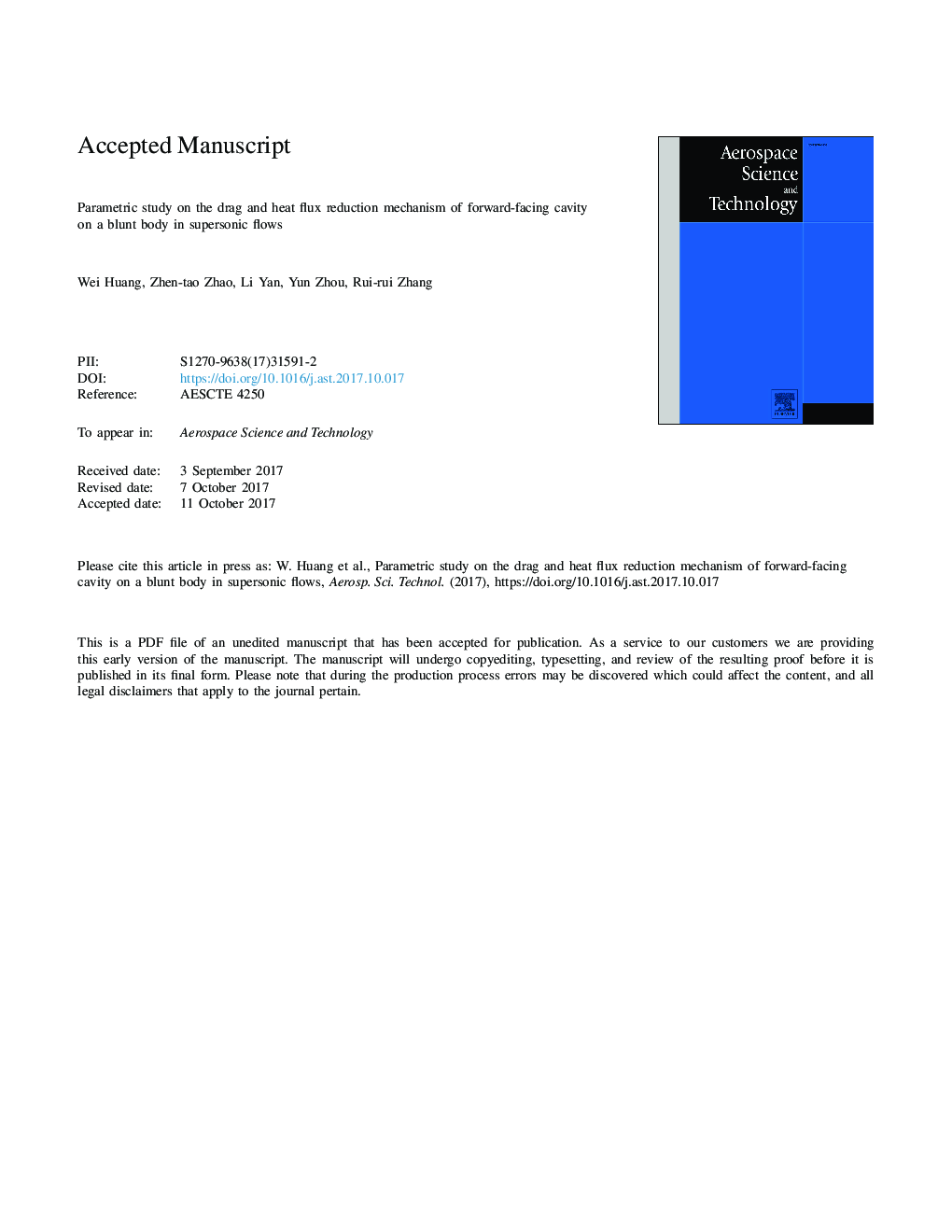| Article ID | Journal | Published Year | Pages | File Type |
|---|---|---|---|---|
| 8058403 | Aerospace Science and Technology | 2017 | 23 Pages |
Abstract
Drag and heat flux reduction is very important for the design of the hypersonic vehicle, and many novel strategies have been proposed recently. As one of the valid drag and heat flux reduction schemes, the forward-facing cavity has attracted an increasing attention for the scholars. In the current study, the influence of the cavity configuration on the drag and heat flux reduction mechanism of a blunt body has been investigated numerically by the two-dimensional axisymmetric Reynolds-averaged Navier-Stokes (RANS) equations coupled with the SST k-Ï turbulence model, and the effects of the depth of the cavity and the angle of its trailing edge have been taken into consideration. At the same time, the numerical approaches employed in this paper have been validated against the available experimental data in the open literature, as well as the grid independency analysis. The obtained results shows that the cavity configuration has only a slight impact on the drag reduction of the blunt body in the supersonic flow with the freestream Mach number being 3.98, and the maximum drag reduction coefficient is within 1.0%. The forward-facing cavity with L/D=4.0 and θ=45° is the most beneficial configuration for the heat flux reduction of the blunt body in the range considered in the current study, and it should be validated by the wind tunnel test in the near future.
Related Topics
Physical Sciences and Engineering
Engineering
Aerospace Engineering
Authors
Wei Huang, Zhen-tao Zhao, Li Yan, Yun Zhou, Rui-rui Zhang,
